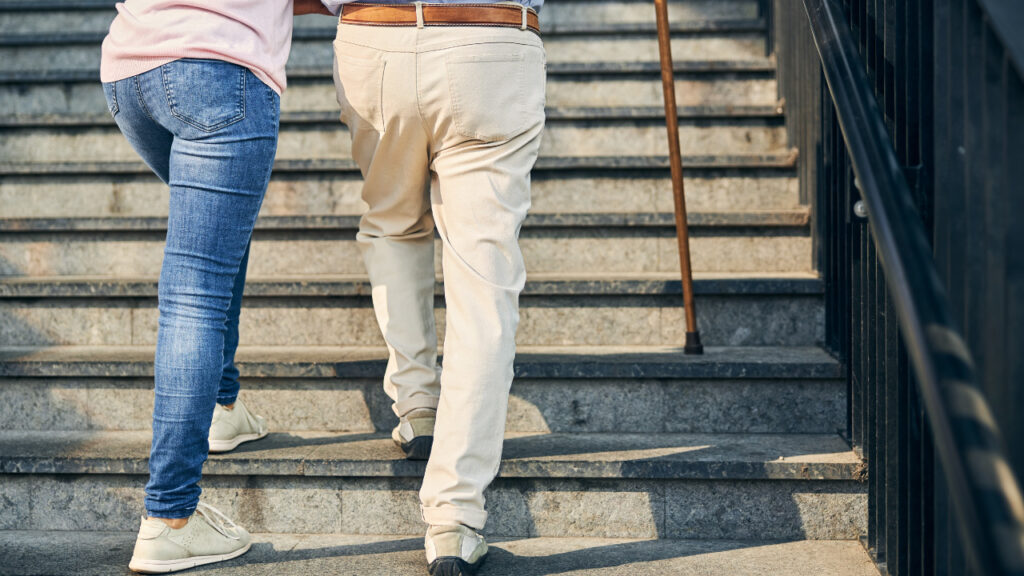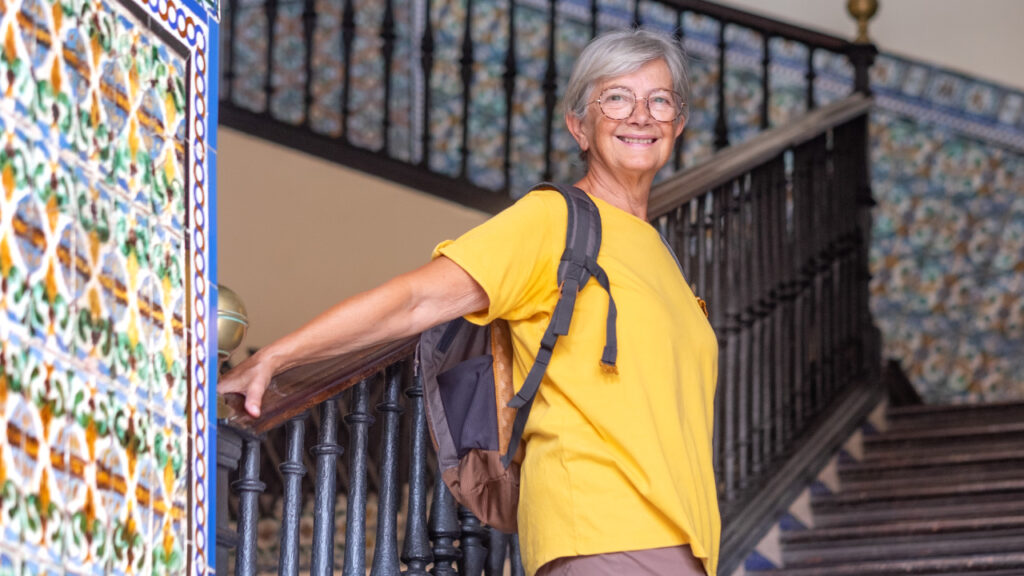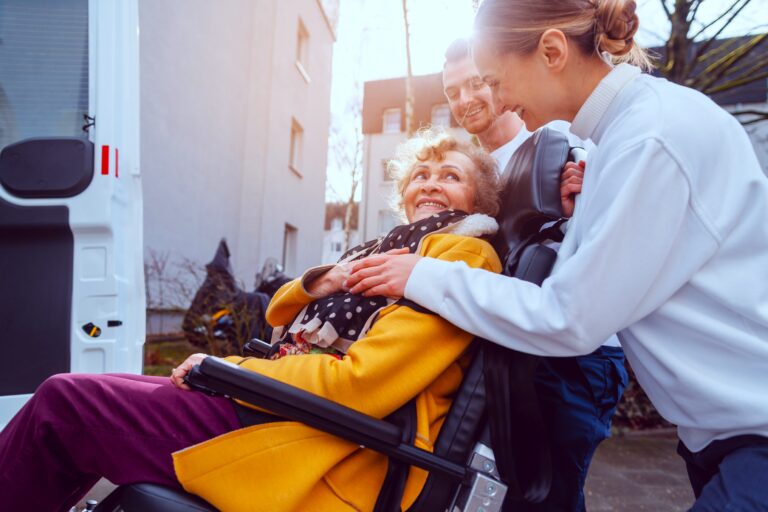As the years go by, it becomes a frequent complaint and has a significant impact on mobility in old age. Lack of strength in the legs can affect independence and quality of life. It’s important to understand the main causes of this problem, recognize the symptoms and act in time to avoid complications, falls and fractures.
Throughout the article we will explore the causes behind muscle weakness in the legs of the elderly and possible solutions.
Key points of the article
- Loss of strength in the legs is common in old age and is mainly the result of a natural reduction in muscle mass (sarcopenia), chronic illnesses and a sedentary lifestyle
- The main symptoms include difficulty getting up, dizziness and persistent weakness
- If left untreated, it can lead to falls, fractures and loss of autonomy
- Regular physical exercise, adaptation of the environment and medical supervision are essential to recover and prevent muscle weakness.
Why is it more common to lose leg strength in old age?
According to recent studies, from the age of 50, our muscle mass begins to decrease by between 1 and 2% per year. This progressive loss is associated with the natural ageing of the body and contributes to muscle weakness. It is estimated that around 25% of people under 70 and up to 40% of those over 80 show signs of sarcopenia, or a marked loss of muscle strength.
This problem tends to intensify with age, reaching even higher levels after the age of 80. Factors such as chronic illnesses, neurological changes and less physical activity contribute to the loss of strength in the legs and increase the risk of falls.

Main causes of leg weakness in the elderly
The causes of this weakness can arise for various reasons and although it is a common situation, it is essential to know them.
Sedentary lifestyle and muscle loss (sarcopenia)
One of the main causes of muscle weakness is a lack of physical activity. Without regular stimulation, muscles atrophy, become stiff and less efficient. Sarcopenia (progressive loss of muscle mass) is age-related, appearing from the age of 30 and accelerating after 60.
Neurological and joint diseases
Parkinson’s, strokes and multiple sclerosis compromise leg strength. However, joint problems, such as arthrosis, limit movement and cause pain and limit the use of muscles.
Side effects of medicines
Medications used for blood pressure, cholesterol or anxiety are common among the elderly and can cause side effects that affect the neuromuscular systems, causing weakness, dizziness or difficulty walking.
Warning signs and associated symptoms
Difficulty getting up
One of the warning signs that usually comes first is the difficulty the elderly person may have getting up from a chair or bed unaided. This effort shows that the leg muscles have lost strength and endurance.
Dizziness and lack of balance
Unsteadiness when walking or standing is usually associated with weakness in the legs and can lead to imbalance, thus increasing the risk of falls.
Muscle pain and stiffness
The appearance of pain, stiffness or a feeling of constant weakness in the lower limbs indicates a problem that needs attention.
Consequences of untreated muscle weakness
Untreated muscle weakness increases the risk of falls and fractures (especially in the hip area). This weakness when left untreated leads to dependence on others, isolation and even cognitive deterioration. This can worsen existing illnesses and reduce quality of life.
What to do: strategies to strengthen feathers
In order to strengthen this leg strength, we present a number of strategies that can help.
Simple exercises for the elderly
Encouraging exercise in old age, such as daily walks, climbing stairs, standing up and sitting down in a controlled and calm manner and stretching exercises help to maintain and recover muscle strength. There are physiotherapy programs that are adapted to the needs of each elderly person.
If you’re interested, these exercises might help.
Here are five seated exercises for the elderly.
Adapting the environment to prevent falls
Adapting the environment is essential if the elderly are to feel more independent. Some changes that can be made include: installing grab bars in the bathroom, removing rugs, improving lighting and wearing non-slip shoes. These tips prevent falls and should be considered.
When to seek medical help?
Medical help is needed when there is a loss of muscle strength, whether progressive or sudden, and when it is accompanied by other symptoms such as persistent and intense pain, swelling or neurological changes. This early diagnosis is essential and allows for control or treatment in order to improve the elderly person’s mobility.
How to prevent loss of leg strength
Prevent muscle weakness by maintaining an active and healthy lifestyle.
- Exercise regularly Eat a diet rich in protein and vitamin D
- Controlling chronic diseases
- Avoid long periods of immobility
- Carrying out routine examinations and mobility assessments.
This weakness in the legs, despite being a common and even unavoidable problem, is often overlooked.
See our article on nutrition for the elderly.
Important links on this subject:
The content of this blog is informative. They are not a substitute for medical diagnosis or treatment. Always consult a health professional.




